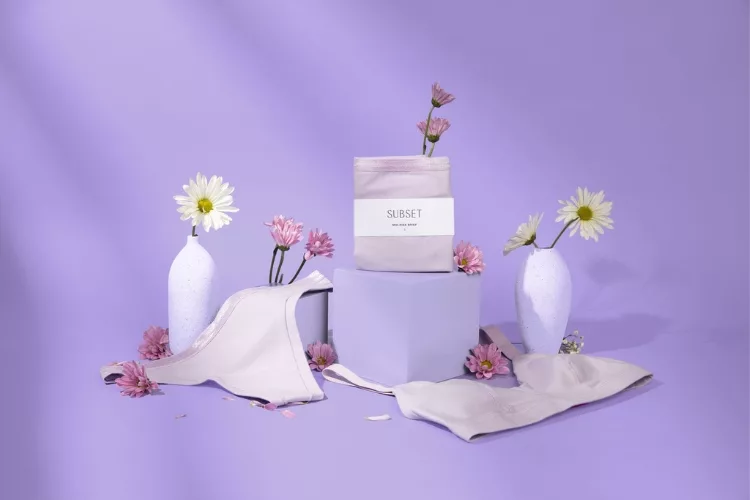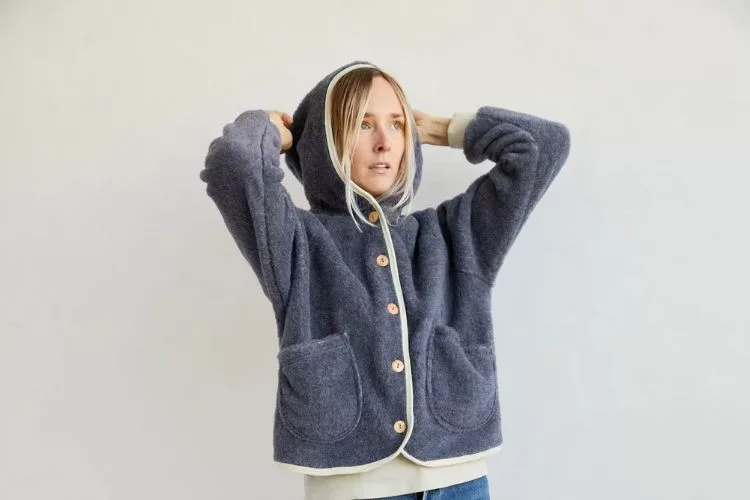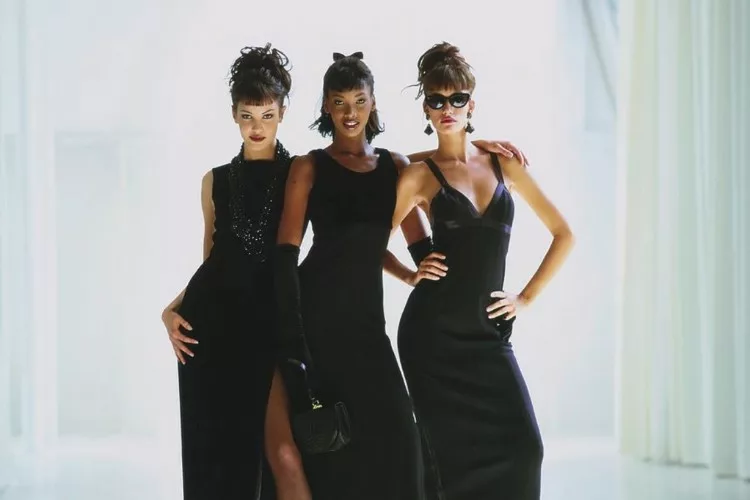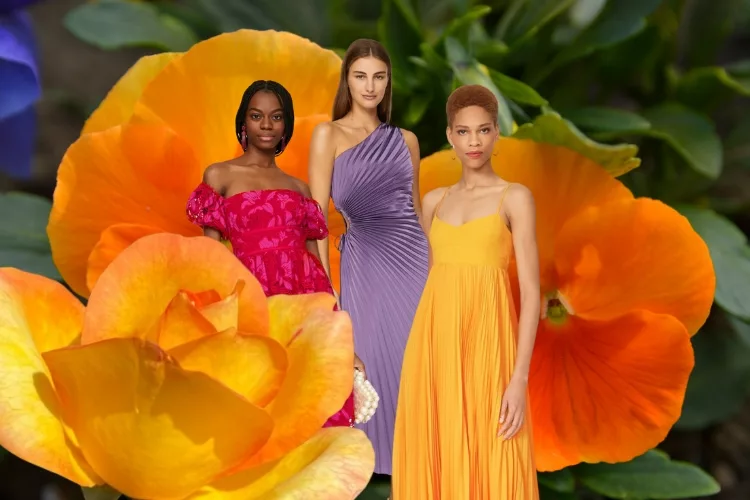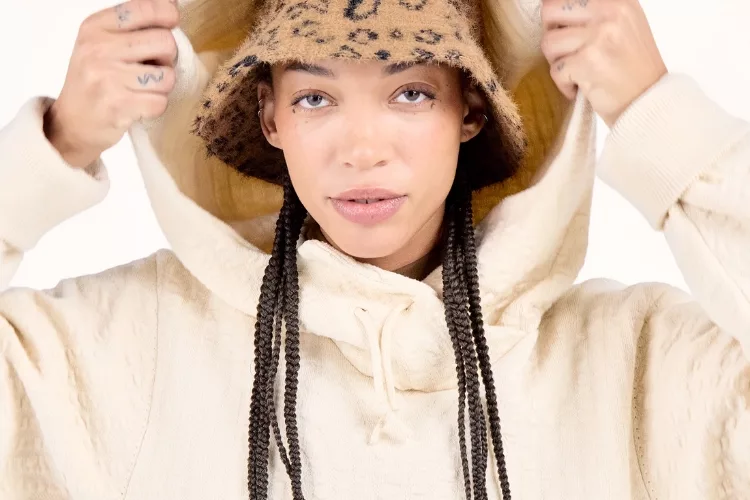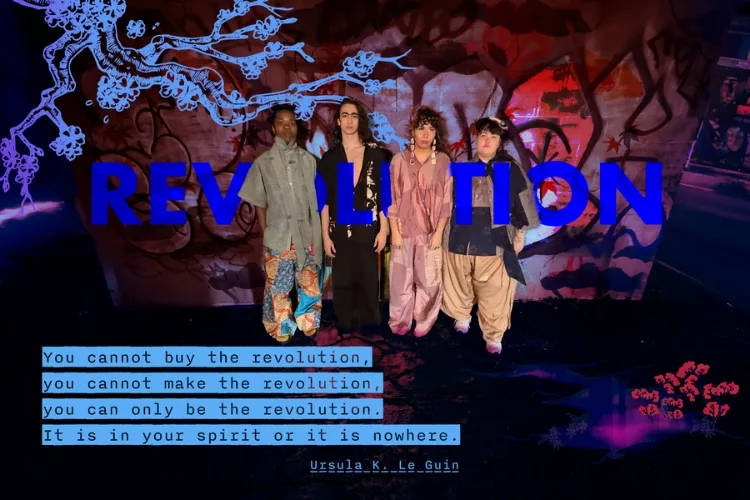There are alot of brands working to be more sustainable but with their new materials PANGAIA is taking it to another level –here are some of our favorites explained
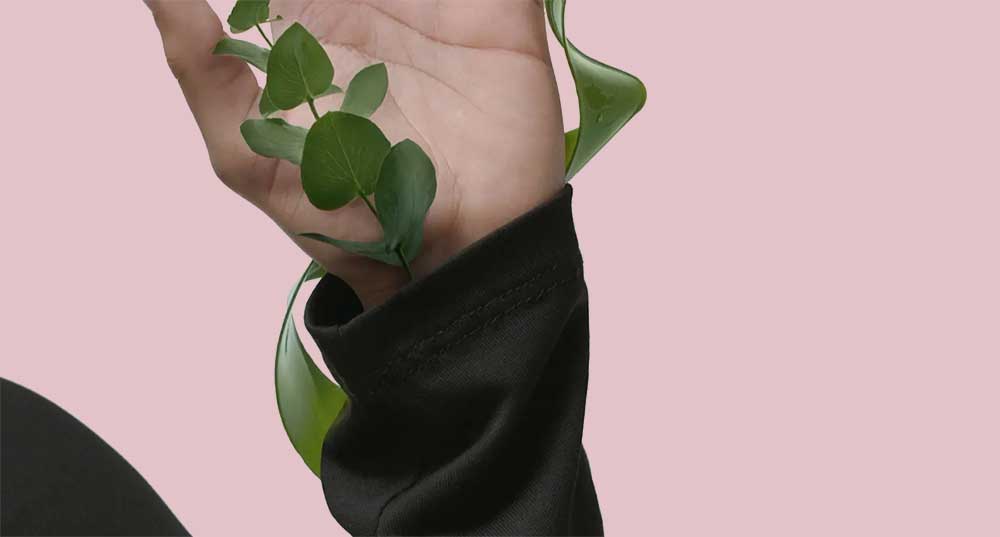
For the fashion industry to become more planet friendly it needs some major changes –like reinventing the materials and processes it has relied for years. And PANGAIA knows this well. Founded in 2018, they don’t call themselves a fashion brand but a materials science company which tells you that they’re taking this seriously.
Can flowers keep you warm? If you’re not Josephine Baker can you really wear bananas? This might sound like something out of a fantasy but flowers, pineapple leaves, and crushed textile waste are just some of the materials that PANGAIA uses on a daily basis for their apparel. The brand is laser focused on creating and bringing innovative materials into the marketplace for both the fashion industry and its own product selection. Here are a few of our favorite innovations.
Re-Color Capsule Collection with Recycrom™
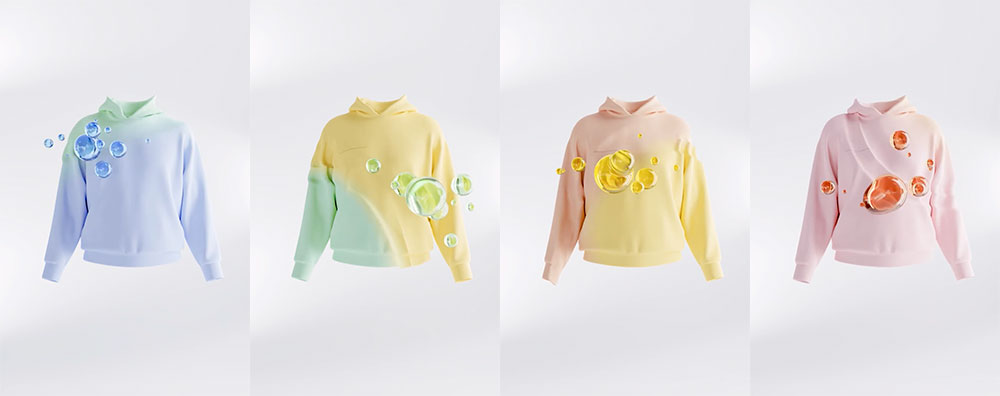
Their latest project has been partnering with Italian lab Officina+39 to create their latest capsule collection. Called Re-Color, it is dyed with a pigment made from their own production leftovers named Recycrom™.
What’s so amazing about Recycrom?
Without getting too technical it’s like this: when clothes are made, there are leftover fabric scraps that are nearly impossible to recycle. PANGAIA has taken these scraps and recycled them into new one-of-a-kind colors. They do this by pulverizing them into fine pigment powders and applying the pigment powders to dye the pieces. This creates a safer, more environmentally friendly way to dye the clothes. And it has the added bonus of keeping the fabric out of landfills.
The Re-Color capsule is part of a broader range of products and a wider intent to build a supply chain that’s not overly reliant on any specific material. Most of fashion’s raw materials are created or sourced in ways that have endangered the planet’s health. Nylon and polyester are made by refining petroleum, and traditional cotton and viscose imply water contamination, soil degradation, and deforestation. Transforming the fashion industry into a more sustainable one involves phasing out or eliminating: conventional cotton, viscose, synthetics, and any non-renewable options.
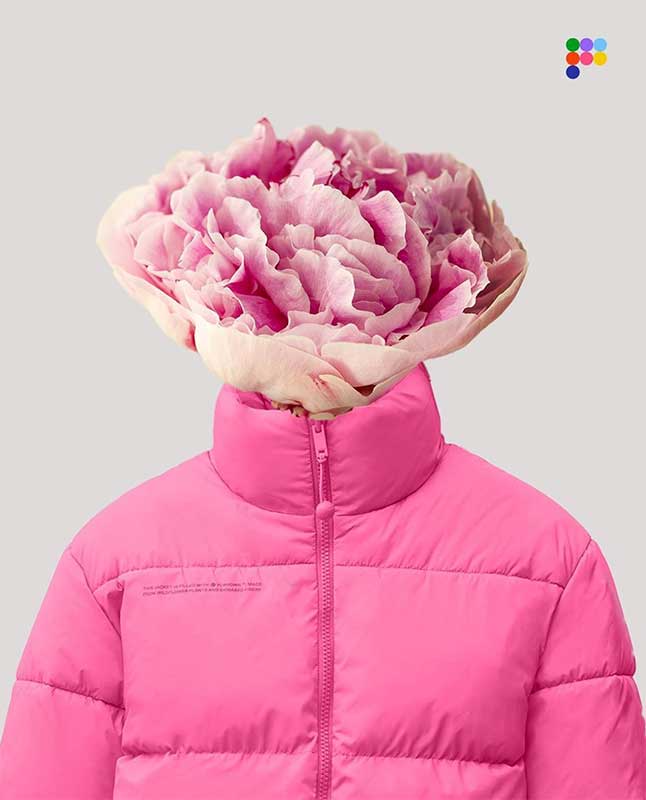
Why We Love FLWRDWN™
If you’re a vegan you’re going to LOVE FLWRDWN! It’s one of the only thermal-insulating alternatives out there to animal feathers or synthetic filling. The fiber is a down-fill material PANGAIA uses in some of their vests, outerwear jackets, and accessories. Made using a combination of wildflowers grown without pesticides or artificial irrigation, it is a fully compostable biopolymer, and a biodegradable aerogel. Apart from being a more sustainable and vegan fashion alternative to traditional down-fill, it’s extremely lightweight and resource efficient.
…But we also love C-FIBER™
Alternatively, C-FIBER™ is a fabric that combines eucalyptus pulp and seaweed powder. The result is a soft and silky material, similar to cotton, that is biobased, biodegradable, and water-saving. Furthermore, as seaweed grows and regenerates abundantly in saltwater, and eucalyptus doesn’t require additional irrigation or pesticides, C_FIBER™ is highly water and energy efficient.
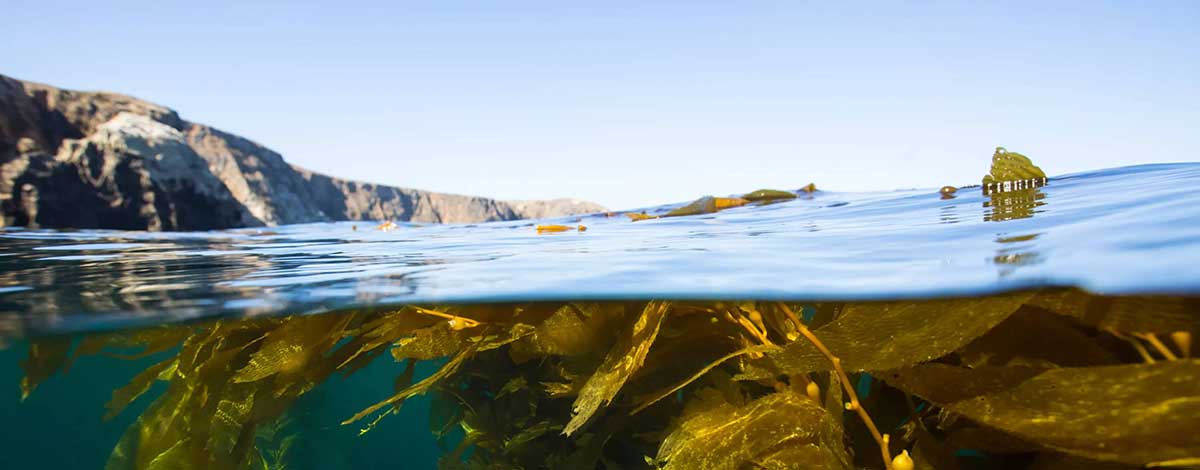
Seaweed is a naturally regenerative resource. It grows abundantly under the sea, meaning no fresh water use is needed during the growth stage. PANGAIA harvests it every four years from Iceland, allowing for full regeneration in between.
Integrating fabrics like this offers a viable solution to the problems fabrics like cotton represents for the planet. Manufacturing traditional cotton is an energy-intensive process that requires high water usage and several chemicals.
+ PLNTFIBER™ + FRUTFIBER™
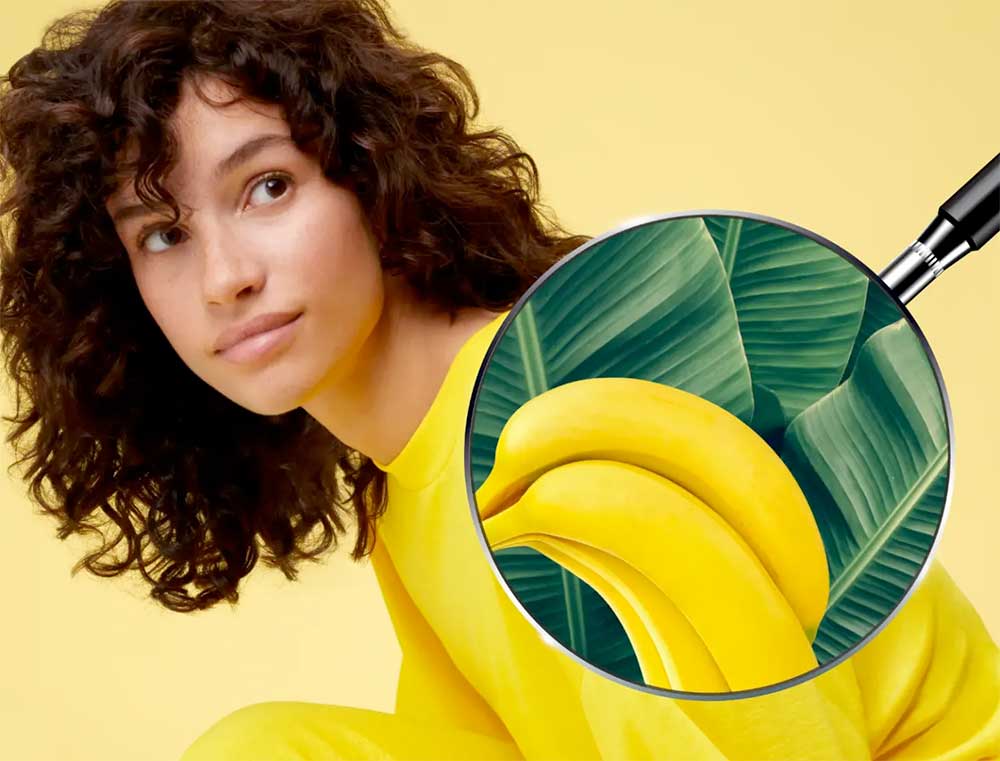
These are two fabrics that easily substitute cotton, made from production waste from the fruit industry and fast-growing plants. PLNTFIBER™ uses Himalayan nettle fiber, bamboo and eucalyptus lyocell, and seaweed, four plants that don’t require additional irrigation, pesticides, or fertilizers. FRUTFIBER™ mixes bamboo lyocell with pineapple leaves and banana leaf fibers, usually considered agricultural waste.
Apart from being two seemingly delicious options, both fabrics use biodegradable, renewable plant tissues and include raw materials, like bamboo, that aren’t only fast-growing but absorb carbon while maintaining healthy soils.
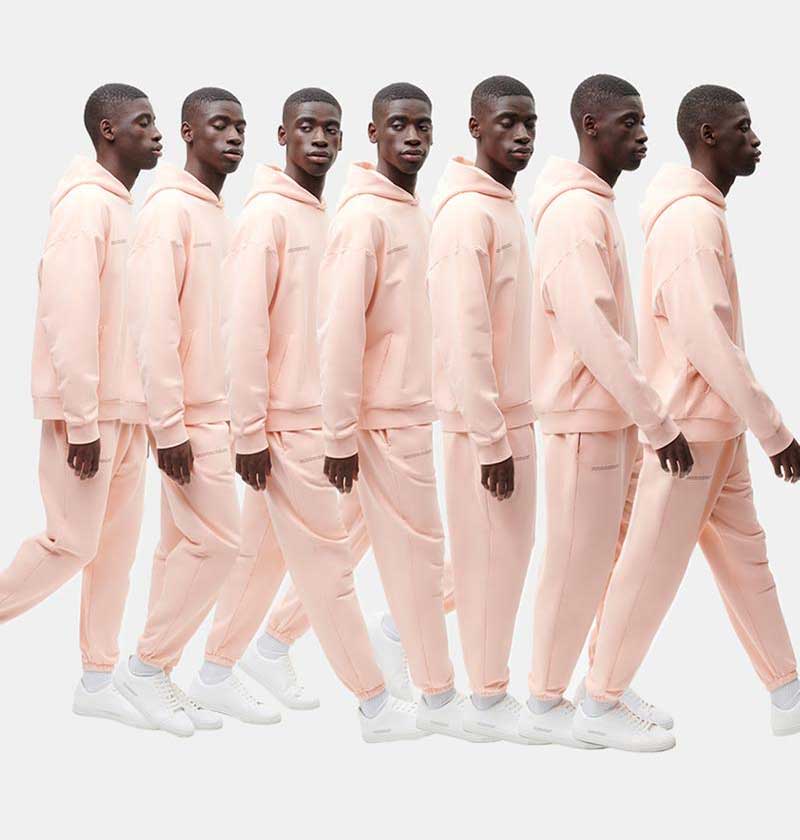
The collective of scientists, designers, and technologists that form PANGAIA are working on developing other low water and energy solutions and localizing production for various material qualities. These two elements are central to their decarbonization strategy which is a foundational part of their Earth Positive philosophy that also includes targets regarding biodiversity and water health. They are committed to achieving net zero across its entire supply chain by 2040. PANGAIA aspires to build a business that gives back more than it takes, and they’re definitely creating the roadmap to get there.
Related Articles
Fossil-free Activewear: How to go from oil-based to Natural Fiber
Bast Fiber Fashion: Plant Based Brands We Love
Meet Vera Banas: ANDEL co-founder, Fulbright Scholar + materials researcher
Early Majority Takes on Fast Fashion and Talks Degrowth
Copenhagen Cool Girl Brand Ganni Does Sustainability Through Collaboration
It’s Time to End Our Toxic Love Affair with Synthetic Clothing

